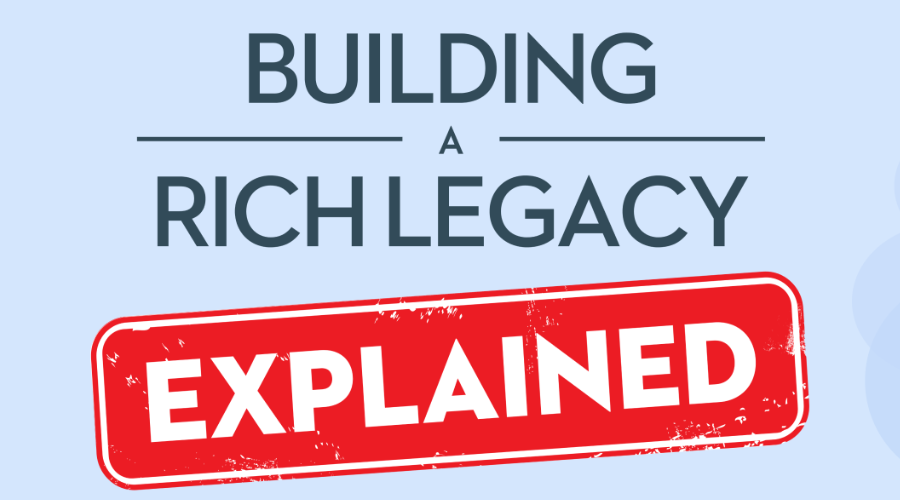If you left a company that provided you with a pension before retirement age, you probably moved your pension assets into a Locked-in Retirement Account (LIRA). Governments do not permit the conversion of pension funds to cash right away, as they want to encourage Canadians to save for retirement.
In this article, we explain what a LIRA is and how it works. We also discuss withdrawal rules and how to unlock your LIRA, along with exploring additional sources of retirement income, such as the CHIP Reverse Mortgage.
What is a LIRA?
A LIRA is a registered account designed to hold pension assets contributed by you and your former employers. The funds in your plan grow on a tax-deferred basis until you are ready to retire, at which point you’ll need to convert your LIRA to an income stream or purchase an annuity.
LIRA withdrawals rules
LIRA withdrawal rules vary according to the province where you reside. One common feature is that LIRAs do not allow for lump-sum withdrawals, with limited options to access your pension assets before you retire. In most provinces, the earliest age that can happen is 55.
How much can I withdraw from my LIRA?
Most provinces allow you to withdraw up to 50% of your LIRA when you reach 55 and then transfer those funds to a Registered Retirement Savings Plan (RRSP). If you need to access those funds from your RRSP, the withdrawal will be subject to tax. Check your relevant provincial pension rules or speak to your financial advisor to learn if you’re eligible for this one-time withdrawal.
When can you unlock LIRA?
The only way to unlock your LIRA assets is to retire. To start receiving the unlocked funds, you must transfer your LIRA assets into a Life Income Fund (LIF), or purchase a life annuity from an insurance company.
When can you withdraw from a LIRA?
You can withdraw from a LIRA as soon as you transfer your assets into your chosen income stream option – so a short time after you turn 55 in most provinces.
How to unlock LIRA?
Although LIRA unlocking rules vary by province, there are a number of exceptions that allow you to access your locked-in funds. Here are some of them:
- Small amounts. If the money in your LIRA is considered too small to serve as a pension in retirement, you may be able to unlock the funds. This could happen, for instance, if you were with a company that offered a pension and then left after a short time.
- Financial hardship. If you are experiencing financial difficulties because of low income, or are facing high medical cost bills or disability-related costs relative to your income, you may be able to withdraw a certain amount from your LIRA. The maximum amount that can be unlocked depends on your expected income for the year in which you unlock the funds. You can learn more and access the required forms here.
- Shortened life expectancy. If you have shortened life expectancy (as certified by a physician) due to a terminal illness or disability, the funds may be withdrawn in cash or transferred to an RRSP or RRIF, subject to applicable tax rules.
- Non-residency in Canada. If you meet certain criteria and the Canada Revenue Agency deems that you are a non-resident for tax purposes, you may be able to unlock the funds in your LIRA.
Unlocking LIRA by province
As we’ve seen, the rules to unlock your LIRA vary by province. Here is a snapshot of the rules in Ontario and Alberta, as well as links for more information about rules in other provinces.
Unlocking LIRA Ontario
The earliest you can unlock your pension assets in Ontario is at age 55, at which point you can transfer up to 50% of your LIRA savings to a LIF or life annuity. There are, however, exceptions, which are discussed in the section above. One distinguishing feature for Ontario is that it has five categories of financial hardship. The shortened life expectancy exception applies when the individual is not expected to live more than two years.
Unlocking LIRA Alberta
The rules governing LIRA unlocking in Alberta are similar to the rules in Ontario, including five categories of financial hardship for early unlocking. However, the province of Alberta no longer administers the financial hardship unlocking program. The application to unlock funds due to financial hardship must be submitted to the financial institution that holds the LIRA. Learn more about Alberta’s rules and access all relevant forms here.
Here are some links to other provinces’ unlocking rules.
- BC – BC Financial Services Authority
- Saskatchewan – Financial and Consumer Affairs Authority
- Manitoba – Manitoba Finance Unlocking Rules
- Quebec – Refunding LIRAs and LIFs in Quebec
- Nova Scotia – Nova Scotia Finance and Treasury Board

Reverse mortgage as retirement income
If you were fortunate enough to work for a company that provided you a pension, you may still need access to additional income in retirement, for a number of different reasons. Maybe the rising cost of living is taking a bite out of your savings, which need to last throughout your retirement years. Or you may be facing an unexpected home expense or medical bill. Perhaps you want to help a child purchase their first home.
If you are looking for additional sources of retirement income and cash flow certainty, you might want to consider the CHIP Reverse Mortgage from HomeEquity Bank.
With the CHIP Reverse Mortgage, Canadians 55+ can access up to 55% of their home’s equity in tax-free cash. Plus, there are no monthly mortgage payments to make; you pay back the loan only when you move or sell your home, which frees up additional cash. You can choose to receive the tax-free funds from the CHIP Reverse Mortgage as a lump sum or in regular monthly deposits, and can use the cash for any of your financial needs.
Another advantage of the CHIP Reverse Mortgage is that the money you receive is considered a loan, so it’s not added to your taxable income and does not affect benefits such as the OAS.
Learn more about how a CHIP Reverse Mortgage works and how it can help supplement your cash flow needs in retirement or call us toll-free at 1-866-522-2447.
Frequently Asked Questions about LIRAs
How much can I withdraw from my LIRA
Most provinces allow you to withdraw up to 50% of your LIRA when you reach age 55 and then transfer those funds to an RRSP. If you then need to access those funds from your RRSP, your withdrawal will be subject to tax.
Does my LIRA grow tax-free?
Yes, your LIRA is a tax-deferred account, meaning the funds in the plan grow tax-free.
Are LIRA withdrawals taxable?
Yes, any withdrawals you make are subject to tax. Since you won’t be making withdrawals until retirement, you will presumably be in a lower tax bracket.
How long can I keep a LIRA?
You can keep your LIRA until December 31 of the year you turn 71. At this point, you have to transfer your assets into a LIF or life annuity to start drawing income.
What happens to my LIRA when I die?
Your beneficiaries will receive the money remaining in your LIRA. Most provinces require your spouse or common-law partner to be your beneficiary, unless they give up that right, at which point it can go to your heirs.































